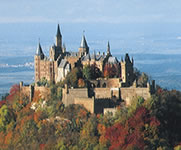Other highlights
Contact
Münster Marketing
Heinrich-Brüning-Strasse 9
48143 Münster
Email:
tourismus@stadt-muenster.de
Internet:
www.tourismus.muenster.de
Heinrich-Brüning-Strasse 9
48143 Münster
Email:
tourismus@stadt-muenster.de
Internet:
www.tourismus.muenster.de
Places of interest

Prinzipalmarkt square in the city centre is lined with historical merchants' houses. Since around 1280, the rows of houses with their gabled fronts and arched walkways have been a dominant feature of Münster's oldest market street in the heart of the city. After being destroyed in the Second World War, the houses have been restored to their former glory.
A three-winged palace built between 1745 and 1753, Erbdrostenhof Palace with its beautiful baroque façade is considered one of Johann Conrad Schlaun's true masterpieces. It was commissioned by one of the highest-ranking secular officials in the diocese, the Bailiff Droste zu Vischering. The forecourt is enclosed by sweeping walls and bars with an impressive gateway.
On this small square the traditional Kiepenkerl monument commemorates the traditional travelling salesmen of the Münsterland region. The 'Kiepenkerle' brought products from the surrounding area into the city in large baskets (Kiepen), offering them for sale at the market and on the doorstep.
Travel Planner
Select an option...



